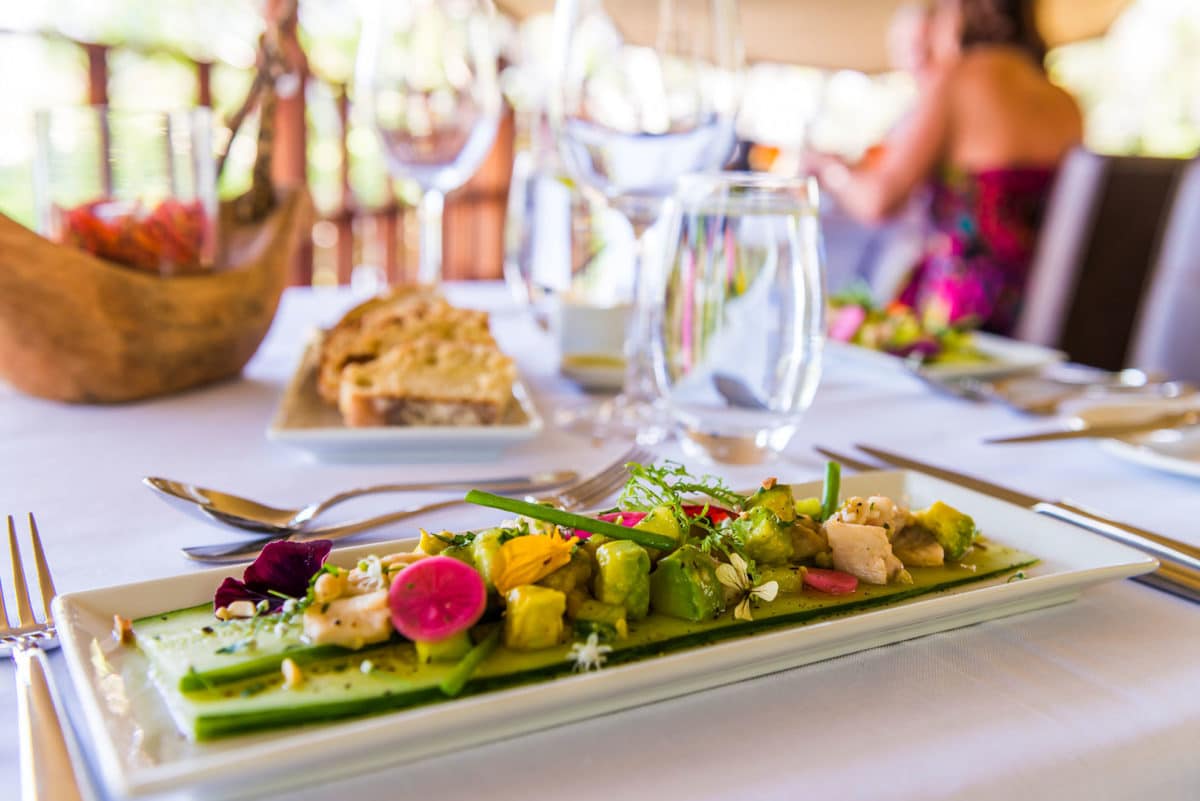Ingredients
For the tilapia ceviche:
- •6 fresh tilapia fillets, or a soft white fish of your choice (about 50 grams each)
- •1 stalk fresh lemongrass, white part only, thinly sliced
- •3 medium cloves garlic, minced
- •Juice and zest of 1 lime
- •45 ml (3 tablespoons) fish sauce
- •7.5 ml (1½ teaspoons) palm sugar
- •1 bird’s eye red chili, thinly sliced (with some seeds removed if too hot)
- •2 shallots, thinly sliced
For the sesame salad dressing:
- •1 garlic clove, minced
- •22.5 ml (1½ tablespoons) fish sauce, or to taste
- •10 ml (2 teaspoons) unseasoned rice vinegar
- •5 ml (1 teaspoon) runny honey
- •177 ml (¾ cup) olive oil
- •5 ml (1 teaspoon) toasted sesame oil
- •Freshly ground black pepper, to taste
For the salad:
- •1 medium lime
- •1 medium avocado, cut into small, neat cubes
- •1 English cucumber, finely sliced into 12 long pieces on a mandolin, and the remainder cut into small, neat cubes
- •237 ml (½ cup) peanuts, roasted and roughly chopped, for garnish
- •15 ml (1 tablespoon) fresh cilantro, roughly chopped, for garnish
- •Black and red pickled radishes, finely sliced, for garnish
- •4 edible flowers (viola petals, nasturtium flower petals, cilantro flowers), for garnish
- •2 small green onions, cut into 7.6 cm (3-inch) lengths, for garnish


Preparation
For the tilapia ceviche:
Fillet the tilapia and refrigerate while preparing the rest of the ingredients.Put the lemongrass, garlic, lime juice and zest, fish sauce, and palm sugar into a blender and puree until smooth.
Pour this mixture over the fish, with the chili and shallots, making sure all of it is well-covered. Let the mixture soak for at least 4 hours, or up to 24 hours, in the refrigerator.
For the sesame salad dressing:
Whisk all the salad dressing ingredients together until the oil is fully incorporated. Set aside.For the salad:
Top and tail the lime. Using a serrated knife, cut down the sides, following the natural curve, to remove the skin and pith. Over a small bowl, remove the segments by slicing between the membranes. Squeeze out any remaining juice over the segments and discard the rest. Soak the lime segments and juice in 3-4 tablespoons of the sesame salad dressing. Set aside.Just before serving, carefully mix the avocado and cucumber cubes in with the lime segments and dressing, making sure not to break up the avocado.
To plate:
Strain the tilapia ceviche, shallots and chili out of its marinade, and discard the marinade.Lay two slices of cucumber neatly on a serving plate. Carefully portion out the avocado and cucumber on to each plate, the length of the cucumber slices. Add the ceviche and spoon a little more of the Asian dressing over the top. Sprinkle the roasted peanuts and chopped cilantro over the salad, and finish garnishing each plate with pickled radish slices, edible flowers, and lengths of green onion.

